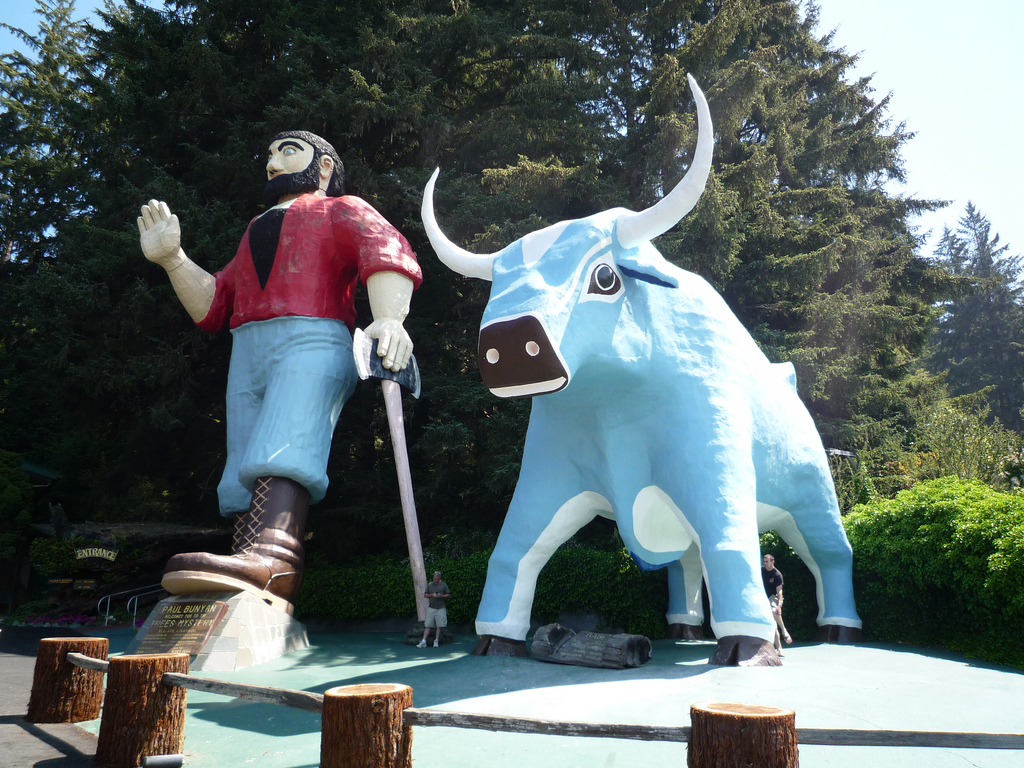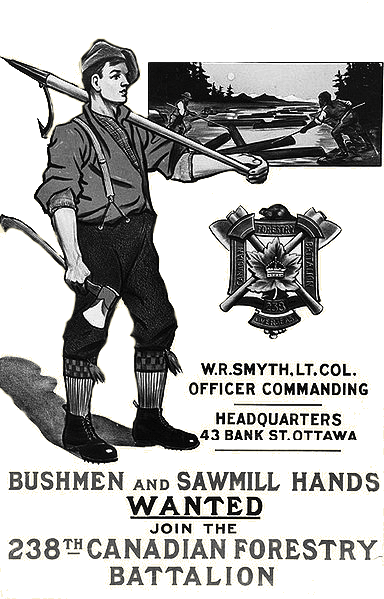|
||||||||||||||||||||||||||||||||||||||||
|
 "Paul Bunyan and Babe the Blue Ox statues at Trees of Mystery. Note the size of the visitors at Paul's feet," Klamath, California, photographed by Wikipedia user Bluemike, 2008. Larger. After the First World War, Anna M. Lind waited tables in Humboldt County logging camps. Her description of the lumberjacks she knew contradicts our Paul Bunyan stereotype. Our logger husbands needed us. On cold rainy days when the men came home at night drenched to the skin, wives helped to peel off the wet, clinging clothes that stuck to their cold bodies like glue, every stitch wringing wet. There would be a warm fire in the kitchen range, a pot of steaming coffee, or if anywhere near payday, a hot drink or two. I'll put it in simple words. I, who had been warm and dry all day, could not do enough for my young husband. . . .Anna M. Lind's recollections of lumbercamp life were published as "Women in Early Logging Camps" in 1975. |
|||||||||||||||||||||||||||||||||||||||













